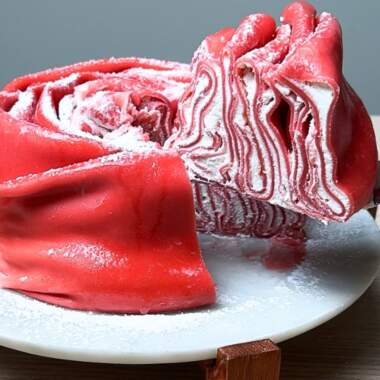Often overlooked after the kernels are enjoyed, corn cobs can be transformed into a versatile stock that adds depth to soups, stews, risottos, and more. Crafting homemade corn cob stock is simpler than you can imagine while saving money, reducing food waste, and enhancing flavor to a wide variety of dishes.
How To Make Corn Cob Stock
- Prepare the Ingredients: Begin by gathering all your ingredients. Place the corn cobs, celery stalks, onion, garlic cloves, parsley, thyme, bay leaves, salt, and peppercorns into a large stock pot or Dutch oven. This medley of ingredients will create a rich and aromatic base for your broth.
- Add Water and Boil: Pour in the 10 cups of water over the ingredients. Bring the mixture to a boil over high heat. As the water heats up, it will start extracting flavors from the corn cobs and vegetables.
- Simmer: Once the water reaches a rolling boil, reduce the heat to a gentle simmer. Allow the broth to simmer for at least 1 hour, and up to 2 hours for a more intense flavor. The longer it simmers, the more the flavors will meld together, creating a rich and nuanced broth.
- Cool Down: After simmering, turn off the heat and let the stock cool for about an hour. This makes it easier and safer to handle when it’s time to strain.
- Strain the Stock: Place a fine mesh strainer over a large bowl. Once the stock is cool enough to handle, carefully pour it through a strainer, pressing down on the solids with a spoon to extract as much liquid as possible. This step ensures you get a clear and smooth broth.
- Store the Stock: Pour the strained corn cob stock into jars or airtight containers. Allow it to cool, uncovered, on the counter. Once cooled, cover the jars tightly with lids. Label and date them before storing them in the refrigerator or freezer. The broth will keep in the fridge for up to four days, or in the freezer for several months.

Flavor Variations
- Enhance Umami with Mushrooms and Tomatoes: Boost the savory richness of your corn cob stock by adding fresh tomatoes or a handful of dried mushrooms, such as shiitake or porcini, during the simmering process. Tomatoes and mushrooms are packed with umami flavor and will impart depth to your broth.
- Sweeten with Root Vegetables: For a slightly sweeter stock, add chopped root vegetables like carrots, parsnips, or sweet potatoes. These vegetables will lend a natural sweetness to the broth and balance out the savory flavors.
- Incorporate Citrus Zest for Brightness: During the simmering stage, add a burst of freshness and brightness to your stock by stirring in some citrus zest, such as lemon or orange. The citrus oils will infuse the broth with a refreshing aroma and flavor.
- Infuse with Seaweed for Umami and Minerals: Boost the nutritional profile of your stock by adding a strip of dried kombu or nori seaweed. Seaweed is rich in minerals and imparts a subtle umami flavor to the broth, reminiscent of the sea.
- Customize with Additional Herbs and Spices: Experiment with different herbs and spices to tailor the flavor of your stock to your preferences. Consider adding a dash of cumin, smoked paprika, or red pepper flakes for a spicy kick.
Where to Use Corn Cob Stock
Pasta: Instead of boiling your pasta in water, add depth of flavor by boiling in corn cob stock! Enhance the flavor of your orzo in our Italian stuffed eggplants, couscous, and more!
Rice: Whether making risotto, ochazuke, or just a bowl of rice add some richness by boiling the rice in the corn cob stock instead of water.
Soups: Replace store-bought broth, bouillon, and water in soup recipes with corn cob stock. This stock pairs lovely with our borscht, tomato soup, and more!

Conclusion
Making your own corn cob stock is a simple and effective way to use every part of your produce, reduce waste, save money, and enhance your cooking with homemade, flavorful broth. The next time you find yourself with leftover corn cobs, give this recipe a try. Your taste buds, your wallet, and the environment will thank you!
Feel free to share your own variations and experiences with this recipe in the comments below. Happy cooking!
Often discarded after the kernels are eaten, corn cobs can be transformed into a versatile stock that adds richness to soups, stews, risottos, and more. Making homemade corn cob stock is easier than you might think and offers the benefits of saving money, reducing food waste, and boosting the flavor of many dishes.
Ingredients
8 corn cobs (husks removed, kernels cut off)
3 celery stalks
1 medium onion, peeled and halved
6 garlic cloves, peeled
4 sprigs of parsley
4 sprigs of thyme
2 bay leaves
10 whole black peppercorns
Salt to taste
10 cups of water
Directions
- Prepare the Ingredients: Place the corn cobs, celery, onion, garlic, parsley, bay leaves, salt and peppercorns in a large stock pot or Dutch oven.
- Add Water and Boil: Pour in the 10 cups of water. Bring the mixture to a boil over high heat.
- Simmer: Once boiling, reduce the heat to a simmer. Allow the broth to simmer for at least 1 hour and up to 2 hours for a richer flavor.
- Cool Down: After simmering, turn off the heat and let the broth cool for about an hour.
- Strain the Broth: Place a fine mesh strainer over a large bowl. Once the broth is cool enough to handle, carefully strain it through the mesh strainer.
- Store the Stock: Pour the strained broth into jars. Once cooled, cover the jars tightly with lids. Then store in the refrigerator for up to 4 days or freeze for up to 4 months till ready to use!








